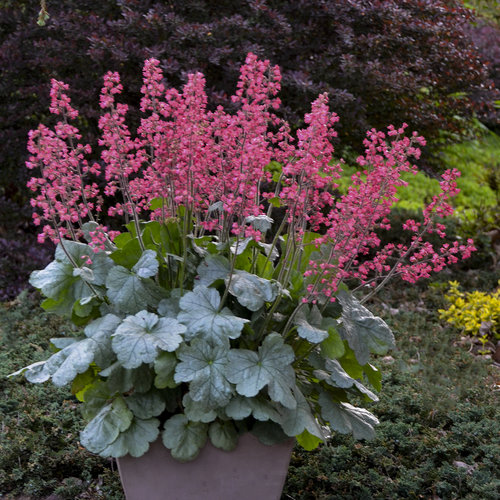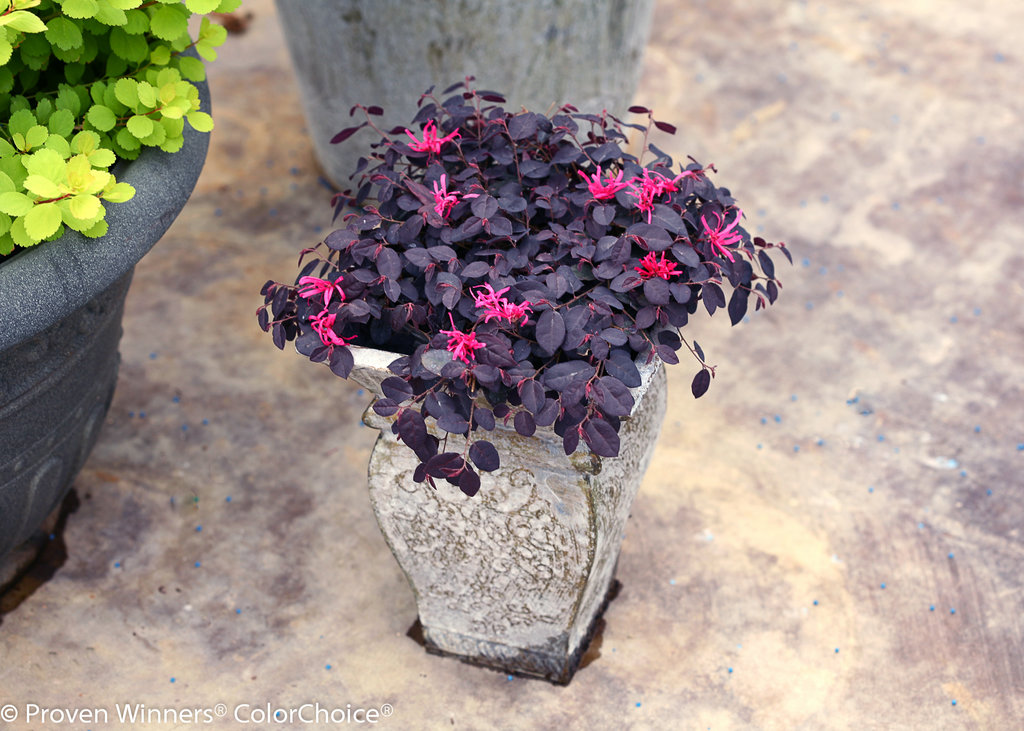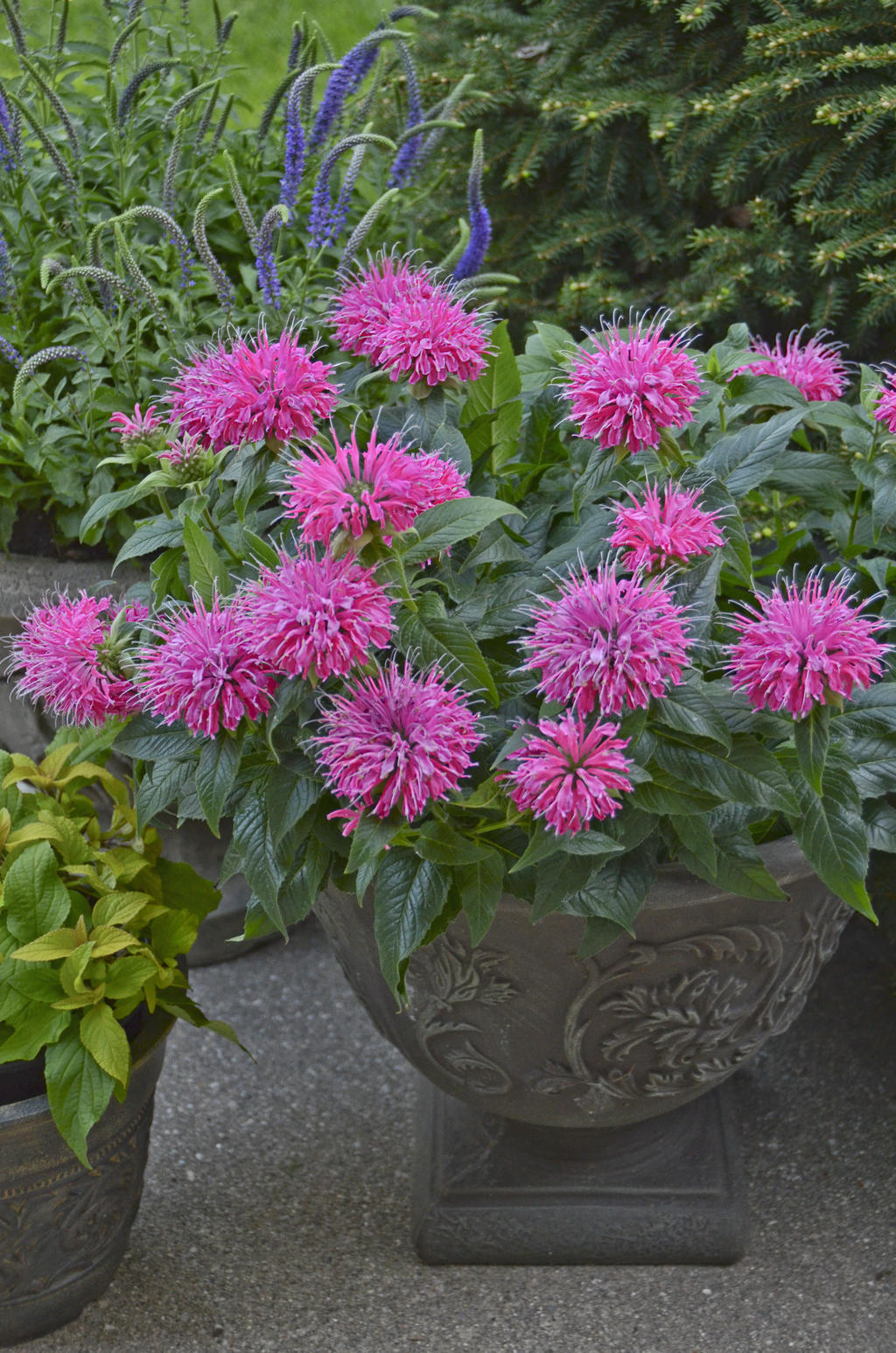Overwintering Pretty Potted Perennials and Shrubs
Growing perennials and shrubs in containers has become an increasingly popular topic. If all you want is the summer color and have no expectations of the plant coming back the next spring, growing a perennial or shrub in a pot is easy. If you are trying to overwinter the plant in the pot, things become a bit more challenging. This article will explain how to grow and overwinter perennials and shrubs in containers.
In recent years growing perennials and shrubs in pots, plants previously reserved mainly for in-ground plantings, has become increasingly popular. I really enjoy the added options and interesting mixes you get by using perennials and shrubs in this manner.
What to Do With Potted Plants at the End of the Season
While many people treat perennials and shrubs planted in containers as annuals, discarding them at the end of the season, there are people who would like to overwinter these plants for use again the next year.
First, let me say there is nothing wrong with growing perennials or shrubs in pots and then discarding them at the end of the season. After all, many plants that we grow as annuals in colder climates are perennials in warm winter climates, for instance marguerite daisies. They are perennial in southern California but certainly an annual for me here in the Midwest. We think nothing of growing these "annuals" for one season, discarding them into the compost pile and then buying them new again next year. There is no reason perennials cannot be treated the same. If you garden in a small space and get easily bored, something I know happens to me, even though you can, you may not want to keep a perennial or shrub for next year. Go ahead and start over. As much as we hear about the "rules" of gardening, what is really important is that you enjoy your garden.
Pardon My Pink' Bee Balm Monarda
Choosing the Best Plants for Overwintering
For those of you that do want to overwinter a perennial or shrub in a pot, it can be done. The easiest way to overwinter a plant in a pot is to choose one that will be hardy in the pot. The general rule for a plant to be winter hardy in a pot sitting on your patio is that it should be two zones hardier than the climate zone you live in. I live in zone 5, to be certain a plant in a pot is hardy for me I should choose one that is hardy to zone 3.
 The reason a plant in a pot needs to be hardier than one planted in the ground is that the soil in the pot will freeze harder than the ground. The soil will also thaw out quicker than the ground. This will lead to multiple freeze/thaw cycles throughout the winter. Freeze/thaw action is especially hard on plants. Plants in the ground benefit from the sheer mass of the surrounding land, the ground simply stays warmer than your pot will. If you are a gambler you can try to overwinter a plant that is one zone hardier than your zone (for a zone 5 garden this would be a plant hardy in zone 4) in a pot that is left sitting out. Some winters you are likely to be successful, others the plant won't survive. If you want to try to ensure your success choose a plant 2 zones hardier. '
The reason a plant in a pot needs to be hardier than one planted in the ground is that the soil in the pot will freeze harder than the ground. The soil will also thaw out quicker than the ground. This will lead to multiple freeze/thaw cycles throughout the winter. Freeze/thaw action is especially hard on plants. Plants in the ground benefit from the sheer mass of the surrounding land, the ground simply stays warmer than your pot will. If you are a gambler you can try to overwinter a plant that is one zone hardier than your zone (for a zone 5 garden this would be a plant hardy in zone 4) in a pot that is left sitting out. Some winters you are likely to be successful, others the plant won't survive. If you want to try to ensure your success choose a plant 2 zones hardier. '
Choosing a Container
If you know you are going to leave your pot sitting outside all winter you should choose a container that won't break from the freeze/thaw action. Clay, glazed and porcelain pots are susceptible to breaking in the winter. Although I have, at times, successfully left pots of this type out all winter, I knew I was risking breaking the pot. Good choices for a container that is going to be left outside include plastic, composite, metal and wood pots.
Little Quick Fire® Hydrangea
Care Considerations
 A perennial or shrub in a pot isn't completely care free even in the winter. Do not fertilize your plants while they are dormant. Once they stop actively growing in the fall, stop fertilizing but still water when the soil is dry. Do not begin fertilizing in the spring until active growth has resumed. Throughout the winter your plant is still going to need some water. If the soil gets completely dry, the plant can die of desiccation. While regular watering isn't necessary, monitor the moisture level and water if the soil is dry. Do not keep the soil soggy, as drowning your plant is also a real concern. I tend to err on the side of too dry rather than too wet. Make sure you place the pot in a location where it can drain, use pot feet or some other material to raise the pot off the ground to help with drainage.
A perennial or shrub in a pot isn't completely care free even in the winter. Do not fertilize your plants while they are dormant. Once they stop actively growing in the fall, stop fertilizing but still water when the soil is dry. Do not begin fertilizing in the spring until active growth has resumed. Throughout the winter your plant is still going to need some water. If the soil gets completely dry, the plant can die of desiccation. While regular watering isn't necessary, monitor the moisture level and water if the soil is dry. Do not keep the soil soggy, as drowning your plant is also a real concern. I tend to err on the side of too dry rather than too wet. Make sure you place the pot in a location where it can drain, use pot feet or some other material to raise the pot off the ground to help with drainage.
Overwintering Marginally Hardy Plants
If you do have a plant that is hardy to your zone or only one zone hardier (a zone 4 or 5 plant in my zone 5 climate) - and you don't want to gamble - you can still successfully overwinter these plants in pots. You will simply have to do more than leave the pot sitting on the patio. The first option is to place the pot in an unheated garage (or other unheated but protected spot). The protection from the building will be enough to keep the pot from freezing too hard and to protect it from freeze/thaw cycles. Wait as long as you can without risking the plant before placing it inside. This unheated space can either be dark or have some light. You will still need to make sure that the soil doesn't dry out completely.
Dolce® 'Spearmint' - Coral Bells - Heuchera
 Another option, rather than using an unheated garage is to dig a hole in an empty or out of the way spot in your garden. Place the pot (with the plant in it) into the hole. Make sure the lip of the pot is either slightly above the ground or even with the ground. Place the soil around the pot so it is secure. Since the pot is buried it will remain the same temperature as the surrounding soil. While you probably won't need to water this plant you should check it occasionally as it may need some supplemental water. In the spring pull the planted container out of the ground, clean it up and place it back in its normal spot. Once the plant starts actively growing begin fertilizing.
Another option, rather than using an unheated garage is to dig a hole in an empty or out of the way spot in your garden. Place the pot (with the plant in it) into the hole. Make sure the lip of the pot is either slightly above the ground or even with the ground. Place the soil around the pot so it is secure. Since the pot is buried it will remain the same temperature as the surrounding soil. While you probably won't need to water this plant you should check it occasionally as it may need some supplemental water. In the spring pull the planted container out of the ground, clean it up and place it back in its normal spot. Once the plant starts actively growing begin fertilizing.
Option three is to wait until fall and then transplant the plant into the soil. Leave it there through the winter and then dig it up in spring and put it back in the pot, or leave it permanently in its new home.
Sweet Romance® - Lavender - Lavandula
The final option is a technique that northern gardeners who grow hybrid tea roses know well. In very cold climates the only way to overwinter hybrid tea roses is to dig a trench, tip the plant over into the trench and then cover it with soil or mulch to protect it for the winter. This method will also work with potted perennials and shrubs. In the spring simply uncover the plant, sit the pot upright, clean it up as necessary and move it to its normal spot. Once the plant starts actively growing begin fertilizing.
 Crib Sheet for Overwintering Perennials and Shrubs in Containers:
Crib Sheet for Overwintering Perennials and Shrubs in Containers:
1. In order to overwinter a perennial or shrub in a container outside, it needs to be two zones hardier than the zone you live in.
2. Perennials and shrubs that are in your zone or one colder can be overwintered in an unheated garage, buried in the ground, or transplanted.
3. Perennials and shrubs in containers will need water through the winter but should not be kept wet.
4. Do not fertilize through the winter. When active growth begins in the spring, start fertilizing the plant.
5. Use large containers. Large containers offer more cold protection to the roots than smaller pots can provide.
6. Huddle for warmth. If you have multiple containers, group them together and place them in a protective corner. Also, they'll be more protected from cold if you put them on the ground rather than up on a deck. And avoid locations with prevailing winds. In some climates, it may also be beneficial to cover them with mulch to provide even more cold protection.
Jazz Hands® Mini - Chinese fringe-flower - Loropetalum chinense
View our Pinterest board of perfectly-sized shrubs for containers here. And pin perennials for containers from this board.




 Crib Sheet for Overwintering Perennials and Shrubs in Containers:
Crib Sheet for Overwintering Perennials and Shrubs in Containers:
